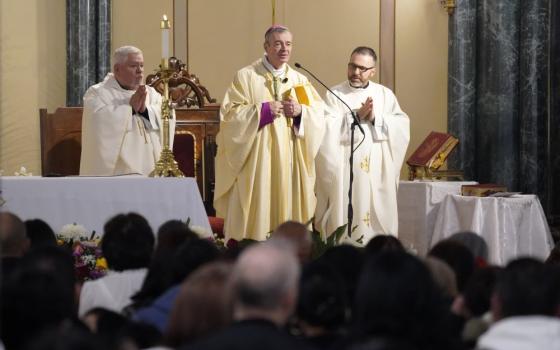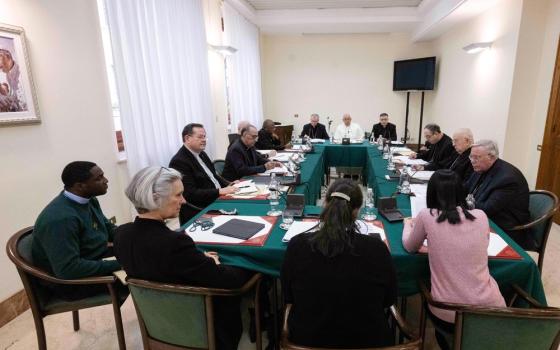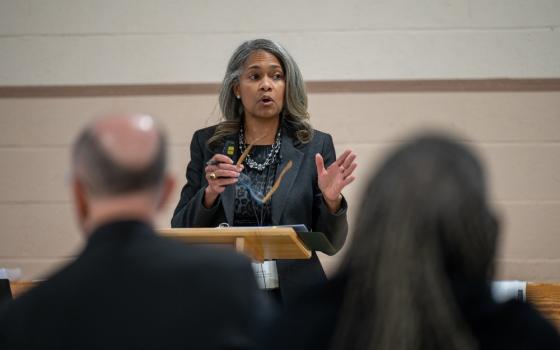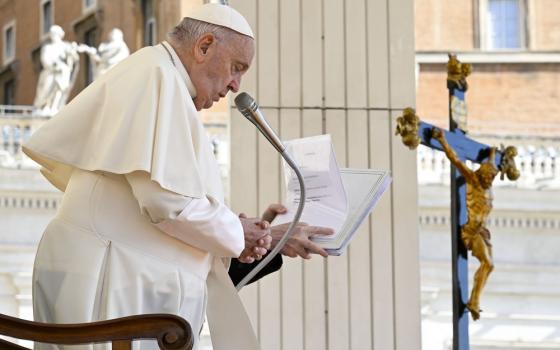The sudden vacancy in the CEO position at the Vatican has spurred a robust and fascinating round of brainstorming. Among the worthy entries is E.J. Dionne's flight of serious fancy in proposing that the next pope be a woman, preferably a nun.
Dionne is aware, of course, that he is whistling in the dark but he isn't just playing let's pretend. He advances serious arguments for his case.
Apart from the seemingly insuperable odds against such an outcome, two subtexts appear. One, would an enlightened nun such as Dionne envisions want the job? Two, what kind of nun would Priscilla I likely be?
The first question asks whether the papacy as constituted is so compromised and encrusted than no would-be reformer could succeed in it. This is the gist of Garry Wills's argument that the role has lost any grounding it might have once had in the leadership model of the early church. It also reflects a longstanding debate among advocates of women's ordination. Should women aspire to be ordained into a priesthood that remains essentially unreformed? Wills, whose reputation for intellect and scholarship are unsurpassed among American Catholics, would appear to believe a thorough revision is the precondition of authentic priesthood. If priesthood, papacy by extension.
And what would the profile of a woman or nun papabile look like? A Mother Teresa or Theresa Kane?
Mother Teresa, the paragon of service to the neediest, had the stature to be a pope equivalent. Without seeking it, she won the acclaim and affection of followers all over the world and exercised leadership through holiness even as John Paul II wielded influence of his own from Rome. The tiny Albanian nun also did nothing to rock the Vatican boat. She remained steadfastly orthodox in matters of doctrine and discipline. She never advocated feminist causes nor spoke a word for women's equality in the church. Together, her unstinting sacrifice for the poor and dying and her unblemished loyalty to church authority and teaching built her a base of support necessary for elevation to the other papacy, though she might have declined it as a demotion.
Or Theresa Kane, the courageous Sister of Mercy who implored John Paul directly to open all ministries of the church to women in front of a stunned crowd in the Shrine of the Immaculate Conception and has long urged removal of barriers to women within Catholicism. That's in addition to her strong advocacy for social justice and ministry to the most dire human needs. Sometimes, as when communities of women religious angered bishops by backing President Obama's compromise on birth control coverage, the Sister Kanes of the church take risks by opposing church practices themselves.
There's the rub. The nun on her way to the papacy must avoid the third rail of church politics, justice within the church itself. Adulation surrounds those who "do good" by providing badly needed food, clothing, shelter and medicine to those at the fringes of society but the cheering often drops to a whisper when sisters demand changes in systems that place people in these desperate conditions and stops completely at "revolution" in the church. Charity has a million friends; justice a handful of pickets.
Dionne reminds us of Pope John XXIII's alert to the cause of women's rights a half century ago. Women were no longer content with a "purely passive role or allowing themselves to be regarded as a kind of instrument," he advised the church. "They are demanding both in domestic and in public life the rights and duties which belong to them as human persons." Far-sighted as it was, John had left the church conspicuously out of the equation. Could a woman become pope in circumstances in which that huge roadblock had not been removed? Could a woman atop that rickety pyramid change anything? Or would that woman have to clearly display her intention to do nothing but leave things the way they have been, her own interruption of papal tradition notwithstanding.




